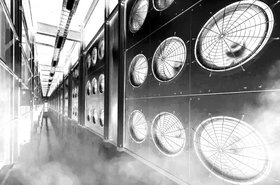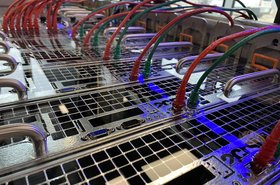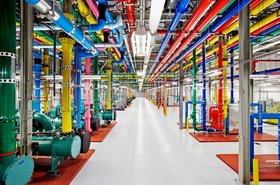Has your organization’s average rack power density increased in the past year, or is it shrinking? That was the question the Uptime Institute posed to global data center owner/operators as part of its tenth annual Data Center Industry Survey. More than one out of five respondents affirmed, “Yes, and rapidly.” More than half stated, “Yes, but slowly.”
Considering the proliferation of compute-intensive workloads that are driving the need for high-density racks — think high-performance computing (HPC), Artificial Intelligence (AI) and machine learning applications — it’s reasonable to believe that increasing density is now the new data center reality. AI applications can draw as much as 30kW per rack or more, and it’s not uncommon for HPC deployments to reach 50kW and beyond at hyperscale data centers.
The problem for legacy data centers is that they offer a one-size-doesn’t-fit-all solution, with most configured at a static density whereby space and power and cooling systems are designed to support a specific density per square foot. Accommodating around 10kW per rack, this standard solution results in stranded capacity and the need to buy more data hall space if more power capacity is required. So, to allow for higher density over the refresh cycles of equipment and future growth, most data center operators have few, if any, options but to reconfigure the layout and/or over-provision.
To increase power density, solve for cooling
From a cooling and electrical perspective, a better approach is to redesign traditionally static systems to be able to handle varying densities, as well as variable power draws. To start, we must understand the data center cooling challenge is actually a heat removal challenge, and a cooling system that captures and removes heat at its source, rather than pushing cold air into the data hall, provides a hyper-scalable and ultra-efficient environment that dynamically adapts to IT loads. With this approach to cooling, a data center provider can work with customers to design and deploy data center infrastructure that is future-proofed for both unknown and planned density changes.
A mechanical, electrical and plumbing (MEP) design that decouples space from power can support density increases vertically within the rack or horizontally with additional rack positions, by supplementing the data hall with additional fan arrays without impacting live load. This methodology enables the cooling system to support much higher watts per square foot of capacity without requiring supplemental cooling or wasting data center space. For example, cooling arrays can handle up to 350 kW of heat in a four-foot section. This approach also addresses the ever more prominent need of high, mixed and variable rack densities within the same footprint.
Hence, if a customer purchases 8MW in 25,000 square feet, and several years into a seven-year term wants an additional 1MW within the same space, the cooling system can accommodate this vertical scaling without requiring the customer to purchase additional space or exotic cooling solutions.
Modular cooling systems allow for the easy addition of more cooling arrays as density grows, increasing cooling capacity on demand. With most, if not all data center operators, a customer would need to build or buy more data hall space if more power capacity were needed. But in deploying a more adaptive and modular cooling technology, a company has the ability to densify the same footprint over time without stranding unused space or capacity.
As densities rise, equally as important is delivering efficiency at any load, in any climate, and regardless of location. Using less energy and water means to cool your data center means reduced resource usage and lower Total Cost of Ownership (TCO).
Quickly coming to an end are the days when data centers open with huge tracts of unused floor space earmarked for years of anticipated growth, but with little to no anticipation of changing computing environments. High-performance workloads will continue to require higher power density per rack, and with the right cooling technology, companies can save data center space and reduce energy costs through increased efficiencies.





